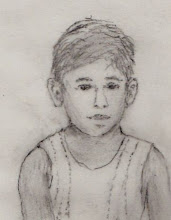 This picture is by Hans Engler (Bremerhaven) and shows the middle stretch of the Weser Estuary at Bremerhaven, 1984. Seen in "Umschau in Wissenschaft und Technik", 1984, 15, cover. View goes upriver at the area of the turbidity maximum. The city of Bremerhaven in the foreground left side. In the bend the Weser is 1 km wide.
This picture is by Hans Engler (Bremerhaven) and shows the middle stretch of the Weser Estuary at Bremerhaven, 1984. Seen in "Umschau in Wissenschaft und Technik", 1984, 15, cover. View goes upriver at the area of the turbidity maximum. The city of Bremerhaven in the foreground left side. In the bend the Weser is 1 km wide.figure 1: river-km from Bremen, Nordsee = North Sea, pic.: Eurytemora affinis female, Anzahl = number, freshwater resp. seawater species, Trübe, T = turbidity maximum, Salzgehalt = salinity.
figure 2: map, dotted = wadden flats.
figure 3: saltwedge, mud black, upwhirling causing turbidity maximum T, fat dots = ideal layer of "no current", F = freshwater, M = sea water.
figure 4: effect of maintenance dredging, M1 = marine sediments being accumulated in the mud zone, M2 = being re-transported to the sea, F1 and F2 for riverine sediments, Einleitungen: inflow.
figure 2: map, dotted = wadden flats.
figure 3: saltwedge, mud black, upwhirling causing turbidity maximum T, fat dots = ideal layer of "no current", F = freshwater, M = sea water.
figure 4: effect of maintenance dredging, M1 = marine sediments being accumulated in the mud zone, M2 = being re-transported to the sea, F1 and F2 for riverine sediments, Einleitungen: inflow.
The Weser Estuary is a tidal coastal plain estuary. It runs through a soft underground and would form its bed according to the hydrographic situation. But a pure nature-made situation would only occur as long as it is un-disturbed by technical measures. If not influenced by dredging and bank stabilization, it would perhaps flow in meanders and in various arms.
But by man-made deepening, maintenance dredging, and narrowing the banks, a permanent canal is formed to enable deep going sea ships to enter the harbour of Bremen. This canal is much deeper than it naturally would be. The bottom would be sand, but since the bed is made deeper than needed by the water to flow through, fine sediments (clay and organic particles) would occur at a place where a salt wedge would have ist upstream end (SpS in figure 3): the bed is over-deepened.
The so-called salt wedge occurs where salt water meets fresh water and under-flows it. Thus freshwater moves on top of marine water, and along a layer of no-flow it mixes and creates brackish water (see arrows F and M in figure 3). This is a very schematic picture which is disturbed by turbulence and other factors.
Very irregular and heavy tides influence the situation. According to the tides the salt wedge moves upstream and downstream, respectively. The mud which is amassed at the bottom of the canal, is eroded by the tidal currents that in the Weser measure up to 2 m per second. This eroded mud renders the water turbid, and a turbidity cloud (T in figures) occurs and at slack water more or less disappears. Here the water has roughly the colour as in the water colour paintings at the end of this blog. The eroded mud is transported by the currents in the respective directions. So the mud is transported upstream at flood, and downstream at ebb tide.
At the tip of the salt wedge the mud accumulates (figure 3). It is not clear how those fine and light weight particles could settle in spite of the heavy currents and the supposed strong turbulence near the bottom. A logical - but not observed - explanation could be that at this place the bottom is - by dredging - so deep that all turbulence vanishes over long periodes of the tide.
By technical maintenence dredging the mud is removed and deposited farther downstream from where it is partly re-transported into the salt wedge area by the currents (figure 4).
In this difficult habitat live a few plankton species of which the calanoid copepod Eurytemora affinis is of greatest abundance. Though is occurs along the whole estuary, even in low brackish tributaries, it has an impressive maximum in an area of very low salinity up to 100 000 animals per cubic meter (figure 1).
November 1997
Aryaman Stefan Wellershaus
now: Ma.Aryaman@gmx.de


Keine Kommentare:
Kommentar veröffentlichen